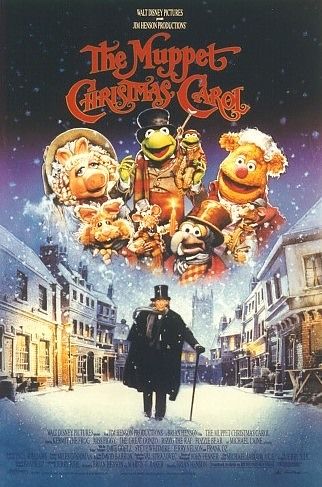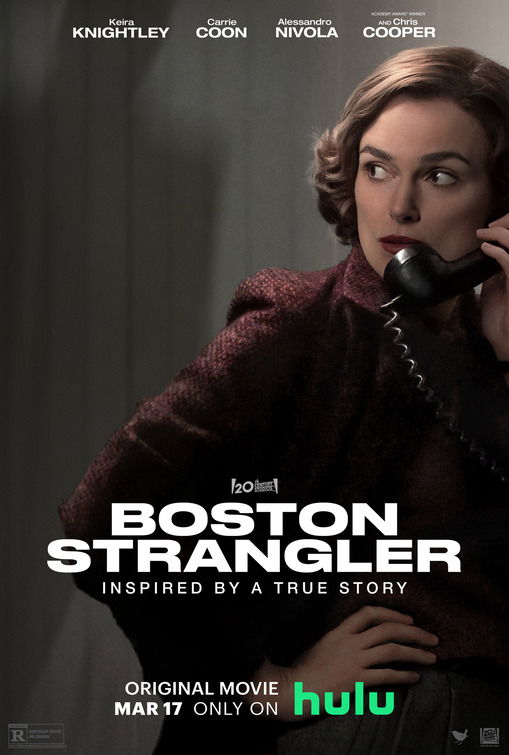“True Life Crime Thriller About Catching Infamous 1960s Serial Killer”

| None | Light | Moderate | Heavy | |
|---|---|---|---|---|
| Language | ||||
| Violence | ||||
| Sex | ||||
| Nudity |
What You Need To Know:
The plot in BOSTON STRANGLER is fast moving from beginning to end. The cinematography is intentionally dark to put viewers into the 1960s, but it sometimes makes the scenes difficult to see. The movie’s basic worldview is moral, with justice being the goal for the protagonists and other characters. There is a secondary feminist worldview as Loretta and Jean fight for the opportunity to report on the best news stories. The movie depicts the sexism prevalent in the news world. Loretta risks everything to break the glass ceiling. BOSTON STRANGLER has some strong violence and strong foul language. Also, the killer’s modus operandi is rather disturbing. So, MOVIEGUIDE® advises extreme caution.
Content:
Strong moral worldview of justice as the ultimate ideal (though two copycat murderers get away with their crimes), with secondary feminist elements where the main character breaks down walls for women to work in the field of journalism, plus there’s a scene set in a church with a choir singing
17 obscenities (including two “f” words), three strong Jesus profanities, one light profanity
Strong violence includes several scenes of a man strangling a woman (one depicted, several overheard and implied), three scenes of police pointing guns in a crime scene (they don’t shoot them), a man is stabbed to death, several scenes of police photographs of victims tied up with a stocking tied around their neck
Light sexual content includes several depictions of a married couple kissing, several scenes of police discussing sexual assault (not depicted), and a man slides his hands up woman’s skirt
No explicit nudity but there are photos of victims wearing only bras and underwear
Four scenes with alcohol use
Several scenes of smoking, but no drugs; and, Miscellaneous immorality: Strong miscellaneous immorality includes stealing, greed, revenge, dysfunctional family dynamics, some bad role models, and male reporters insult female reporters, downplaying their efforts and abilities.
More Detail:
Loretta Mclaughlin, a reporter who works for a Boston newspaper, The Record American, is tired of getting the standard lifestyle assignments appealing to women, such as fashion articles and reviews of kitchen products. When she discovers a neighbor is killed around the corner from her mother’s house, she asks to cover the story to see if there’s a connection between that killer and the one who killed two others in the area. Confirming that the killer used similar patterns of murder, she wrote her first story with a byline titled, “Mad Strangler Loose.” City leaders are up in arms over the story, so Loretta’s boss kills the story. However, when a new victim is confirmed, the newspaper runs it as front-page news.
Loretta goes to the scene of the fifth victim, and the stories continue. However, as Loretta begins to build a name for herself, it puts a strain on her family and her marriage. As she struggles to find how the Boston Strangler is getting into women’s apartments to kill them, she’s derailed when the killer changes the age of his victims.
Loretta begins to get threatening phone calls, and she questions whether she should continue. However, a discovery about one of the victims, Patricia Bissett, who was pregnant and having an affair with her boss, gives Loretta the opportunity to interview her relatives. They catch her boss tampering with evidence and failing polygraph tests, but the police drop the case. However, it’s enough to give Loretta renewed credibility.
She then gets a call from the police commissioner who wants her to cover the story of a sixth victim as well as the police’s failure to catch the killer. The police then appoint a new commissioner after the story breaks.
Loretta receives a lead on man named Albert DeSalvo. Nicknamed “the green man,” or “the measuring man,” DeSalvo wore green work clothes and convinced woman to let him in so he could check their apartment for issues in the apartment. He would also ask women if they would consider modeling for his agency. She follows the lead but hits a dead end. That is until they search court records and find DeSalvo petitioned the court to be released early from prison and was in Boston two months before the first murder. Loretta discovers DeSalvo hired a defense lawyer to negotiate a deal. The murders stop, and the wrong man is put in jail after a victim wrongly identifies him.
Two years later, in 1965, six more women are strangled in Ann Arbor Michigan, identical in pattern to the Boston victims. Loretta sees a new person in a newspaper, Daniel Marsh. Daniel’s girlfriend was killed by the Boston Strangler, and he was seen in Ann Arbor. She reports it to a police commissioner who confirms Daniel is their prime suspect. Connecting Daniel as one of the patients in a mental hospital, she connects Daniel to the murders because DeSalvo was in the same ward.
After Daniel is arrested, Detective Connelly, the person, with whom Loretta is working quits, and decides to make a movie out of his discovery. When he calls Loretta to see if she’ll cover his story, DeSalvo is killed in his cell. She talks to another man in the mental hospital, and she discovers that there is more than one Boston Strangler. Greg Nasser, another man in the mental health ward, got his lawyer to organize a coercion. Marsh, Nasser and lawyer F. Lee Bailey, coached DeSalvo on his confession so they could get the reward money and a book deal.
The plot in BOSTON STRANGLER is fast moving from beginning to end. The cinematography is true to the era, giving the movie a true 60s feel with its use of light and dark lighting and single camera filming. However, it’s often too dark, which makes some scenes hard to understand.
BOSTON STRANGLER has a strong moral worldview. The two female reporters strive to find justice for the strangler’s victims. The movie also has some feminist elements because it explores the two reporters’ struggle to make a name for themselves.
Given the movie’s subject matter, the director does a great job using photos to depict the violent nature of the Boston Strangler’s crimes without adding too much violence. Although there are two depictions of a woman and man being killed, most of the murders are through overhearing them from a neighbor’s perspective. This is also true of the sexual assaults associated with these murders. That said, the nature of the murders, plus the foul language and sexual references in BOSTON STRANGLER, warrant extreme caution.


 - Content:
- Content: 


